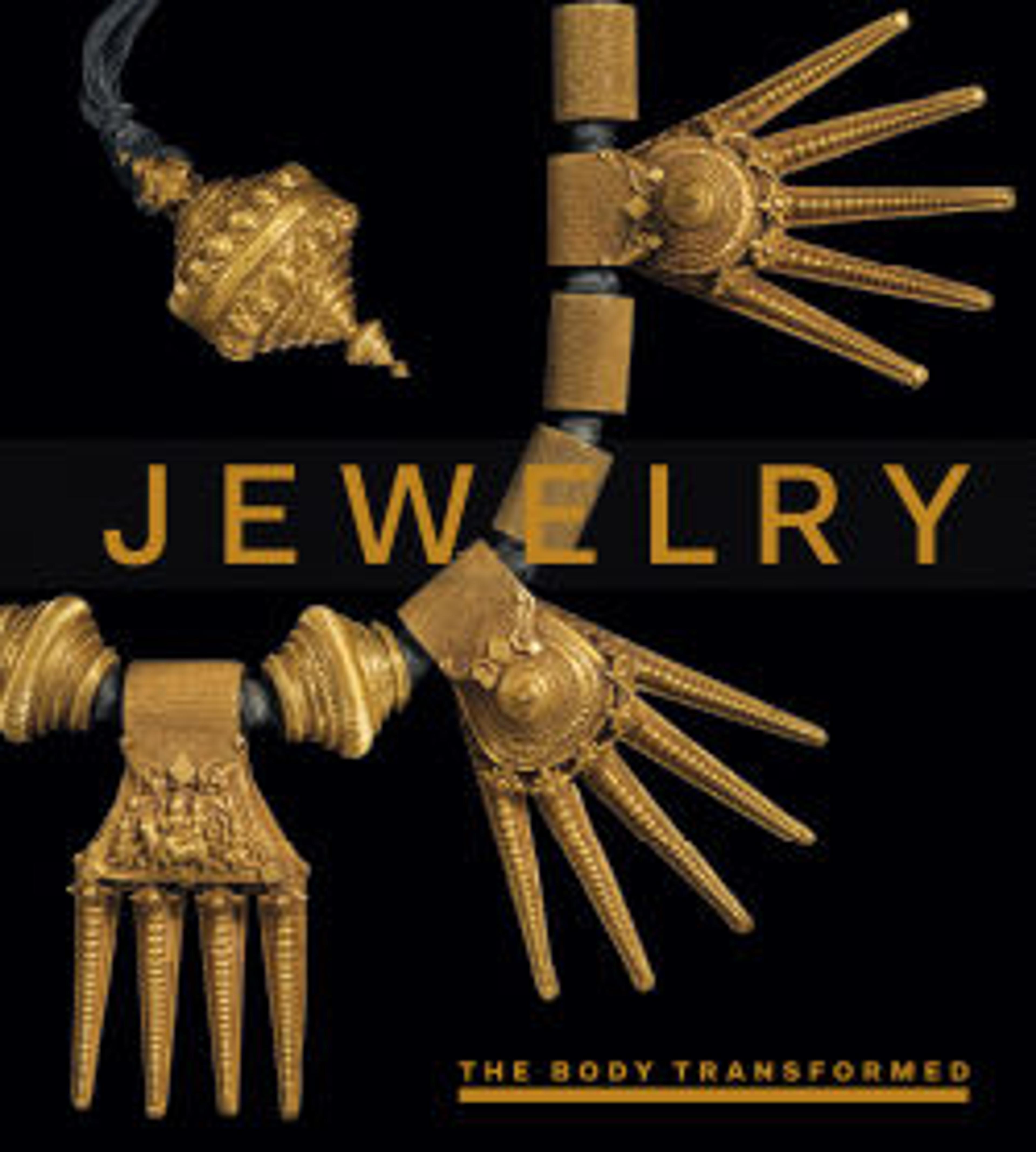Necklace
This choker adorned one of the sixty-eight women or young girls laid out in the so-called Great Death Pit at Ur, which was probably part of a royal tomb. The bodies were all ornamented with the most splendid jewelry made of gold, lapis lazuli, and carnelian.
The collar consists of alternating triangles, twelve of lapis lazuli and eleven of gold. Each gold triangle is made from a diamond-shaped and corrugated piece of sheet metal that has been folded back on itself to create seven horizontal tubes. The surface of the lapis lazuli triangles is also corrugated, making it look as if they too have seven horizontal perforations, but in fact there are only three perforations through the stones, so that the collar was held together by three rather than seven threads. Collars like these are too short to have fully encircled the neck. They may have been worn as separate items like chokers, extended by cloth straps around the back, or they may have been attached to jackets.
The collar consists of alternating triangles, twelve of lapis lazuli and eleven of gold. Each gold triangle is made from a diamond-shaped and corrugated piece of sheet metal that has been folded back on itself to create seven horizontal tubes. The surface of the lapis lazuli triangles is also corrugated, making it look as if they too have seven horizontal perforations, but in fact there are only three perforations through the stones, so that the collar was held together by three rather than seven threads. Collars like these are too short to have fully encircled the neck. They may have been worn as separate items like chokers, extended by cloth straps around the back, or they may have been attached to jackets.
Artwork Details
- Title: Necklace
- Period: Early Dynastic IIIa
- Date: ca. 2600–2500 BCE
- Geography: Mesopotamia, Ur (modern Tell al-Muqayyar)
- Culture: Sumerian
- Medium: Gold, lapis lazuli
- Dimensions: L. 23.3 cm
- Credit Line: Dodge Fund, 1933
- Object Number: 33.35.47
- Curatorial Department: Ancient West Asian Art
More Artwork
Research Resources
The Met provides unparalleled resources for research and welcomes an international community of students and scholars. The Met's Open Access API is where creators and researchers can connect to the The Met collection. Open Access data and public domain images are available for unrestricted commercial and noncommercial use without permission or fee.
To request images under copyright and other restrictions, please use this Image Request form.
Feedback
We continue to research and examine historical and cultural context for objects in The Met collection. If you have comments or questions about this object record, please complete and submit this form. The Museum looks forward to receiving your comments.
